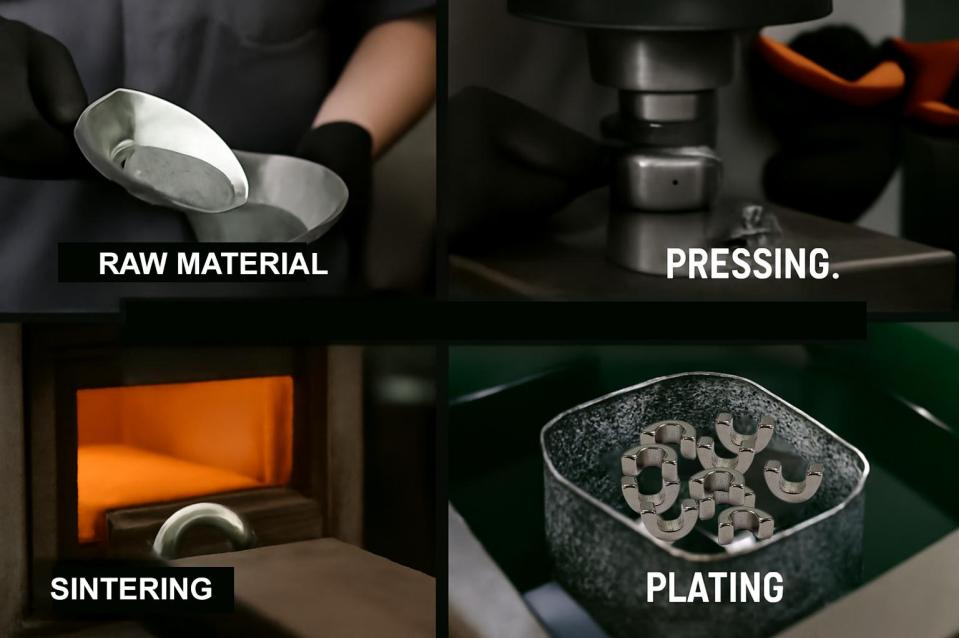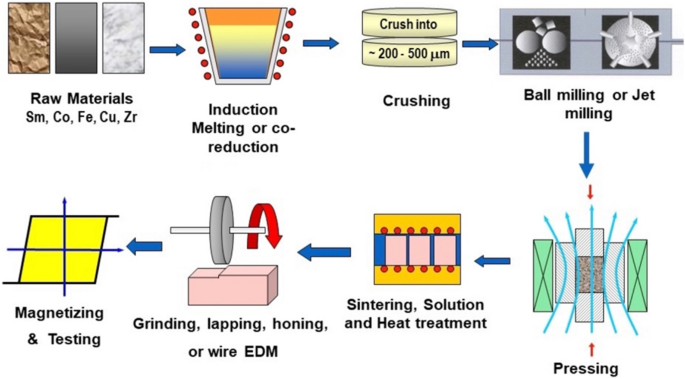How Are Magnets Made? – A Complete Step-by-Step Process
How Are Magnets Made? – A Complete Step-by-Step Process
Introduction
Magnets play a vital role in modern technology, powering everything from electric vehicles and wind turbines to smartphones and medical equipment. Among the most sought-after are neodymium magnets and other rare earth magnets known for their superior magnetic strength, energy product, and high-temperature stability. Understanding how magnets are made reveals not only the science behind these essential components but also the direction of future innovation in magnetic materials.
Step 1: Raw Material Selection
The process begins with selecting the right raw materials. For high-performance magnets, this often means rare earth elements such as neodymium, samarium, or praseodymium, combined with iron and boron for neodymium magnets (NdFeB) or cobalt for samarium-cobalt magnets. The purity and precise composition of these materials are crucial for achieving maximum magnetic flux density and coercivity.
Step 2: Alloy Preparation
The selected materials are melted together in a vacuum or inert atmosphere furnace to form a homogeneous alloy. This step is critical for ensuring the final magnet will have uniform magnetic properties. For advanced rare earth magnets, this process might include adding trace elements like dysprosium to boost high-temperature performance.
Step 3: Milling and Powdering
Once the alloy is cooled, it is crushed into a fine powder. This powdering step is especially important for sintered magnets like NdFeB, as it allows for precise control of grain size. Finer grains can improve both magnetic strength and resistance to demagnetization.

Step 4: Forming and Compaction
The powdered alloy is then pressed into molds, often in the presence of a strong magnetic field. This process, called magnetic alignment, ensures the grains are oriented for optimal magnetic performance. The compacted powder takes the shape of the final magnet, whether it’s a disk, block, or ring.
Step 5: Sintering and Densification
The shaped magnet is sintered at high temperatures to fuse the powder particles, increasing density and structural integrity. This step is essential for achieving the high energy product and magnetic flux density needed in advanced applications. During sintering, further adjustments can be made to enhance thermal stability.
Step 6: Machining and Finishing
After sintering, the magnets are often brittle and may require precision machining to achieve final dimensions and tolerances. High-performance magnets, especially those for electric motors and medical devices, must be crafted to exact specifications.
Step 7: Surface Treatment
To prevent corrosion and extend lifespan, the magnets undergo surface treatments such as plating (nickel, zinc, or epoxy) or nano-coating. This is particularly important for neodymium magnets, which can be prone to oxidation.
Step 8: Magnetization
The final step is magnetization, where the finished magnet is exposed to a very strong magnetic field, aligning the magnetic domains to achieve maximum magnetic strength. After this step, the magnets are tested for coercivity, remanence, and overall energy product.

Future Trends in Magnet Manufacturing
Modern trends are shaping the future of magnet production:
Additive manufacturing (3D printing) is allowing for complex geometries and miniaturization, especially for micro-magnets.
Recycling technologies are emerging to recover rare earth elements from spent magnets, supporting sustainability.
Ongoing material research focuses on rare earth-free magnets and hybrid composites, aiming to balance performance and resource efficiency
Conclusion
The step-by-step production of magnets, especially high-performance varieties like neodymium magnets, requires a blend of advanced material science, precise engineering, and innovative manufacturing. As industries push for more efficient, miniaturized, and sustainable solutions, future developments in magnet-making will continue to enhance their magnetic strength, energy product, and overall technological impact across a growing range of applications.




Jinconn WeChat









